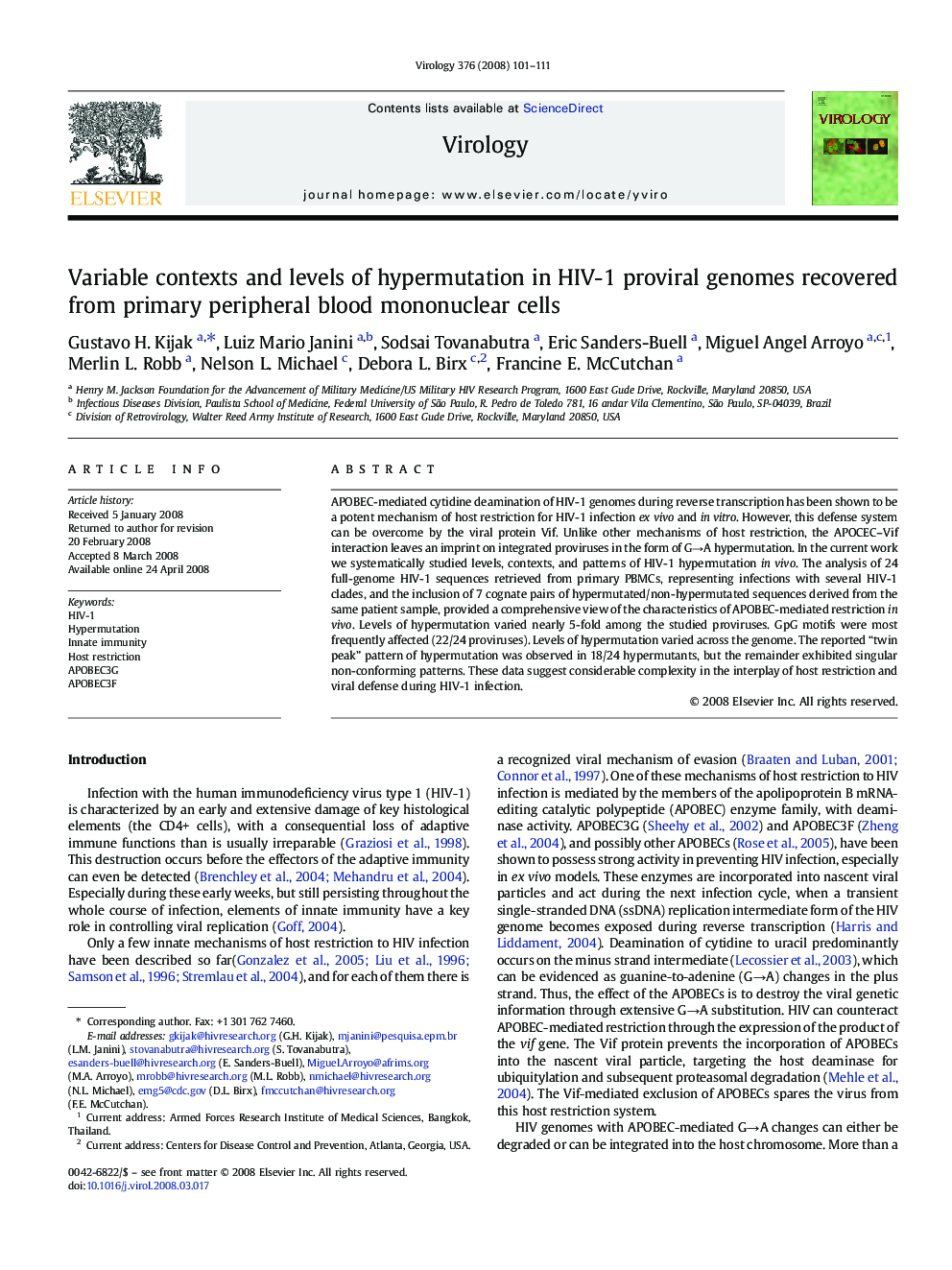| Article ID | Journal | Published Year | Pages | File Type |
|---|---|---|---|---|
| 3425751 | Virology | 2008 | 11 Pages |
APOBEC-mediated cytidine deamination of HIV-1 genomes during reverse transcription has been shown to be a potent mechanism of host restriction for HIV-1 infection ex vivo and in vitro. However, this defense system can be overcome by the viral protein Vif. Unlike other mechanisms of host restriction, the APOCEC–Vif interaction leaves an imprint on integrated proviruses in the form of G→A hypermutation. In the current work we systematically studied levels, contexts, and patterns of HIV-1 hypermutation in vivo. The analysis of 24 full-genome HIV-1 sequences retrieved from primary PBMCs, representing infections with several HIV-1 clades, and the inclusion of 7 cognate pairs of hypermutated/non-hypermutated sequences derived from the same patient sample, provided a comprehensive view of the characteristics of APOBEC-mediated restriction in vivo. Levels of hypermutation varied nearly 5-fold among the studied proviruses. GpG motifs were most frequently affected (22/24 proviruses). Levels of hypermutation varied across the genome. The reported “twin peak” pattern of hypermutation was observed in 18/24 hypermutants, but the remainder exhibited singular non-conforming patterns. These data suggest considerable complexity in the interplay of host restriction and viral defense during HIV-1 infection.
